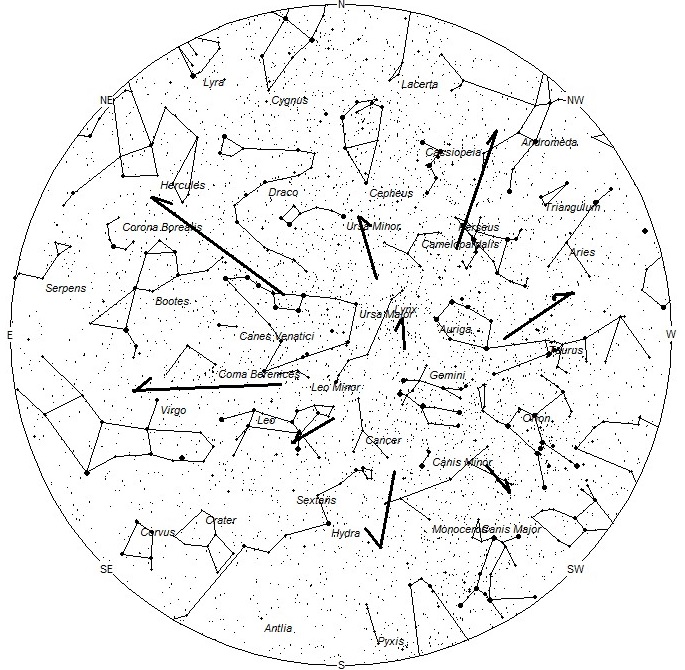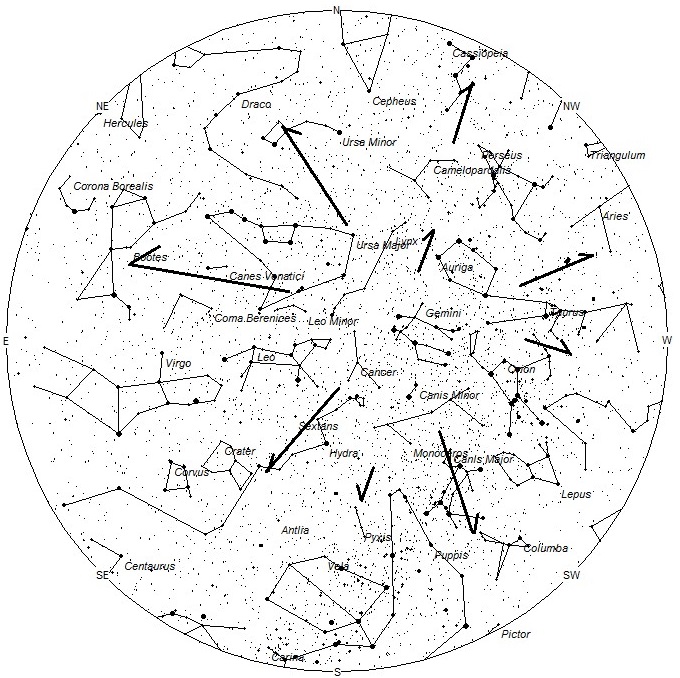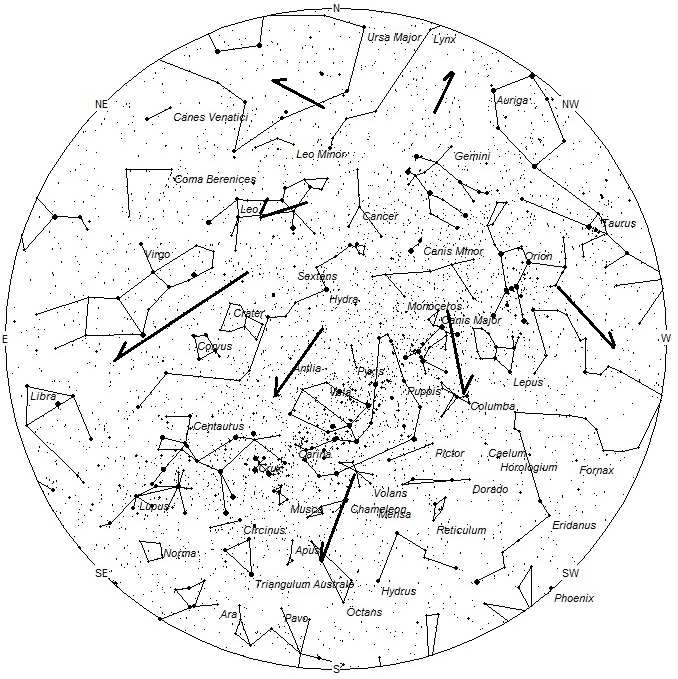The Geminid meteor shower is normally the strongest shower of the year, often producing in excess of 60 meteors per hour at maximum activity. This year though, the nearly full moon will interfere with viewing this spectacle.
The display is currently active with hourly rates near 15, seen after the waxing gibbous sets. Rates will increase with each passing night until maximum is reached on Friday morning December 13. On that morning the moon will be 85% illuminated and will set near 3:30am local standard time (LST), as seen from mid-northern latitudes. This will give you 2-3 hours of dark sky between moon set and dawn, depending on your location. At the time of moonset the Geminid radiant will still be high in the sky as seen from the northern hemisphere so viewing good rates is still possible.
Viewing during the evening hours on Thursday and Friday will provide some activity, but the bright moon will be in the sky obscuring all but the brightest meteors. This display is so strong though that 15-20 meteors per hour may still be seen despite the poor viewing conditions. Note that these rates are better than better than 95% of all other nights, moonlight or not. So if this is your only time available to view the Geminids, then go for it!
The best strategy for seeing the highest activity for the Geminids this year would be to view on Friday morning December 13, between moonset and dawn. Use a comfortable lawn chair and bundle up to keep warm. Face toward the darkest direction available about half-way up in the sky. Geminid meteors will originate from high in the western sky during the morning hours but can be seen in all portions of the sky as the shoot away from the radiant. Watch as long as possible as activity occurs in waves. There will be periods of inactivity followed by lots of action.
Most reports on this shower advise potential observers to view on Saturday morning December 14, for the best rates. Yet using IMO video data from the past several years yields a precise peak of the Geminids at solar longitude 261.6, which corresponds to 16:00 Universal Time (8:00am PST) on the morning of December 13th. So my advice for observers in the western hemisphere is to view on Friday morning. Rates will still be good on Saturday morning but the moon will be more than 90% illuminated and will not set until 4:15am local standard time compared to 3:30am LST on Friday. Observers in Europe and Africa will most likely have similar rates on Friday and Saturday mornings, but the moon situation is better on Friday. Observers in Asia and Australia will most likely experience better rates on Saturday morning December 14th. This display can be seen from the southern hemisphere but rates will be reduced as the Geminid radiant lies closer to the northern horizon, compared to nearly overhead for viewers in the northern hemisphere.
 American Meteor Society
American Meteor Society



At approximately 6:10 a.m. 12/13/13 at Moline, Il. while stopped at the traffic lights at 7th St. and John Deere Rd. I saw a meteor out the truck windshield on the right side just above the tree line headed west parallel to John Deere Rd. It had a greenish/yellow glow at the rear. The sky was still dark at this hour and I thought it was quite low and might land in the next town Rock Island, Il.
Is it too late to see the meteor shower tonight – 12/14-12/15? I’m planning on driving out to the mountains to see it, but I want to make sure it will be worth it… What’s the meteor per hr rate after the peak?
Thanks
Keri,
Due to the bright moonlight there will not be much difference in what you see from home verses the mountains. Rates are falling now so I would expect one to see 10-15 meteors per hour tonight.
I hope this helps!
Robert Lunsford
American Meteor Society